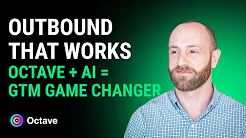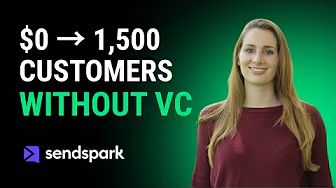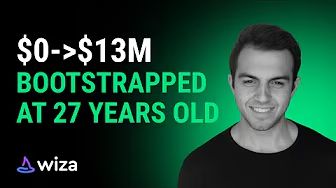
Understory Unfiltered: Octave’s GTM Engine - AI Agents, Contextual Messaging & 10% Reply Rates
Catch up on our Understory Unfiltered episode sharing how Octave’s game changing GTM engine

Learn how to use B2B intent signals to grow your pipeline.
SaaS growth teams spend more time coordinating between paid media specialists, outbound vendors, and creative freelancers than engaging prospects. Meanwhile, potential buyers research solutions for weeks outside your visibility.
Those hidden activities leave intent signals, digital footprints such as pricing page visits, technical document downloads, job postings for implementation roles. These reveal which prospects actively evaluate solutions and why.
Capturing these signals lets your team identify high-value prospects early, prioritize outreach based on buying behavior, and deliver consistent messaging across channels. This guide shows you how to distinguish real buying intent from research noise, layer multiple signal sources for earlier detection, and turn intent data into coordinated campaigns that outpace competitors still relying on form fills.
When a prospect who visits your pricing page once gets the same follow-up as someone who's visited five times across three devices, you waste sales capacity on casual visitors while high-intent accounts slip away.
The distinction between casual research and serious evaluation comes down to pattern recognition across three dimensions: recency, frequency, and engagement depth. Here are key factors that separate high-intent buyers from browsers.
Temporal clustering reveals urgency. Five pricing page visits spread over three months signals curiosity. Five visits in one week signals active evaluation with a decision timeline. When engagement compresses, so does the buying window.
Set your systems to flag accounts showing 3+ high-value interactions within 7 days. This temporal density predicts more likely conversion than isolated engagement over months.
Cross-device behavior confirms committee involvement. When the same content gets accessed from multiple IP addresses or devices within 48 hours, you're seeing buying committee formation. A technical doc viewed from a corporate office IP, then a mobile device, then a home IP within two days means multiple stakeholders are sharing and reviewing your content.
This multi-device pattern is invisible in standard analytics but reveals collaborative evaluation happening in real time.
Content sequencing shows the evaluation stage. Prospects move through predictable content progressions: awareness content, feature comparisons, technical documentation, pricing/ROI tools, then case studies. Track this sequence.
A prospect who jumps straight to API docs and pricing hasn't skipped steps. They've completed early research elsewhere and entered active vendor comparison. Reverse the sequence and you see something different: case studies before feature pages suggest they're validating an internal recommendation, not conducting fresh research.
The challenge isn't capturing signals. It's building systems that recognize these patterns automatically and route them to appropriate teams before competitors spot the same accounts.
Most content about intent signals focuses on "better targeting" or "qualified leads." That misses the bigger win: intent signals reduce the coordination required between specialized teams that takes up valuable time.
When every pipeline review becomes a debate between teams about which accounts deserve attention, accounts showing clear buying intent get inconsistent messaging because no single team has complete visibility. This problem can be reduced by watching for and responding to intent signals.
Intent signals create a shared truth layer. When everyone sees the same real-time data, this account visited pricing 6 times, downloaded two case studies, and has three stakeholders researching on G2, it is easy to see they are a likely buyer.
Marketing then knows which accounts to prioritize for spend. Sales knows which outreach will land. Customer success knows which accounts are expansion-ready. The coordination overhead of aligning these teams disappears because they're operating from shared buyer intelligence, not competing internal metrics.
The coordination advantage compounds across the funnel. Marketing stops generating leads sales won't pursue. They route spend only to accounts showing research momentum, eliminating wasted impressions on cold audiences.
Sales stops chasing accounts marketing "qualified" based on form fills alone. They pursue only accounts crossing multiple intent thresholds with context like "I noticed three teammates compared us to Competitor X this week".
Customer success shifts from reactive firefighting to proactive revenue protection, spotting churn risks well before renewal decisions when declining engagement predicts contract risk.
Quantify the coordination savings. Track how many hours your team currently spends in pipeline reviews, lead scoring debates, and account prioritization meetings.
Intent signals can reduce the time required because prioritization becomes obvious. That time savings lets growth teams run more experiments, optimize more campaigns, and close more deals instead of debating which accounts matter.
Not all intent signals predict purchase equally. You need to distinguish between early exploration, active evaluation, and purchase-ready behavior. Four signal categories capture these distinct moments, each requiring different responses from your team.
Engagement intent signals reveal active problem evaluation through repeated pricing page visits, consecutive product blog reads, or multiple webinar registrations. These first-party signals update in real time and are highly reliable since they occur on your properties.
The key is pattern recognition: isolated clicks mean little, but sustained high-value engagement combined with content downloads indicates serious buying intent. A prospect who reads your API documentation three times in two days is signaling technical evaluation, not casual interest.
Research intent signals appear when prospects explore review sites, read competitor comparisons, or trigger category keyword surges across publisher networks. These third-party signals often precede direct website engagement, giving your team a chance to influence consideration before competitors enter the conversation.
When multiple accounts from the same company appear on G2 comparison pages within 48 hours, you're seeing buying committee formation in real time.
Hiring intent signals include job postings for roles related to your software category, new executives leading modernization initiatives, or rapid team expansion in relevant departments. These reveal where spending decisions are forming months before RFPs.
A company hiring three marketing ops specialists after appointing a new CMO is preparing for martech consolidation—your window to position as the platform choice.
Technographic intent signals track changes in a company's tech stack. Individually, these shifts may be weak, but in combination (new CRM plus marketing ops hire plus research spike) they form composite signals that surface buying intent well before formal evaluation stages.
When a company migrates from Marketo to HubSpot while researching attribution platforms, they're rebuilding their entire stack—the ideal moment for coordinated outreach.
The strongest signals combine multiple categories. A prospect researching your category on review sites, visiting your pricing page repeatedly, and posting a job for someone to implement solutions in your category isn't browsing—they're buying.
The quality of your intent data determines whether you reach prospects during early research or after they've shortlisted competitors. Each data source offers different visibility windows into the buying journey.
First-party intent data comes from channels you own: website analytics, product telemetry, CRM activity, email engagement. You can trigger immediate actions like launching LinkedIn retargeting when a visitor lingers on pricing pages or alerting SDRs when trial users explore enterprise features.
Its limitation is visibility. You only see interactions on your properties, missing a majority of research happening elsewhere. But its accuracy and GDPR clarity make it the foundation of any serious intent program, especially when enriched with IP-based firmographic identification to detect which enterprise accounts are exploring your technical pages.
Second-party intent data is another company's first-party data shared through direct partnership. Review platforms sharing which companies are comparing you to competitors, publishers revealing who's consuming topic-specific content, or co-hosted webinars pooling attendee behavior.
This expands visibility into evaluation stages you'd never see on your own site. The key is ensuring data-sharing agreements align on consent, scope, and retention—poorly structured partnerships create compliance risks that outweigh the intelligence gains.
Third-party intent data providers aggregate anonymized behavioral data across thousands of domains, offering the broadest market visibility. You discover accounts researching your category before they visit your site or competitors'.
The trade-off is noise and latency. Signals from aggregated data are days old and require validation. Use third-party insights to discover net-new accounts or spot market trends, then validate them with fresher first- and second-party data before launching outreach.
Most providers flag "spikes" when company research behavior rises above historical baselines; treat these as investigation triggers, not immediate action signals.
The most sophisticated intent programs layer all three sources: third-party data identifies emerging opportunities, second-party data confirms active evaluation, first-party data triggers coordinated outreach.
Your intent strategy is only as strong as its data foundation. Get collection and integration right, and every downstream motion runs seamlessly. Skip it, and even the best signals become noise your team ignores.
1. Start with first-party precision. Begin with data you fully control. Tracking pixels and cookies on your site capture key actions: clicks, page views, form submissions.
But go deeper with custom event tracking for engagement behaviors that predict conversion such as PDF downloads, calculator interactions, video completion rates, time spent on technical documentation. Layer IP-based firmographic identification to partially de-anonymize visitors and detect enterprise accounts exploring your technical pages.
This reveals which companies are researching even when individuals don't convert.
2. Expand with external feeds. Broaden visibility using second- and third-party intent sources. Publisher networks aggregate topic consumption across thousands of sites. Review platforms reveal late-stage evaluation activity.
Most providers flag "spikes" when company research behavior rises above historical baselines. Treat these as real-time engagement triggers, not static prospect lists. For instance, a spike means act now, not add to nurture.
Prioritize sources that update daily and provide account-level (not just contact-level) intelligence so you can see buying committee formation.
3. Prioritize integration and hygiene. Data accuracy depends on clean integration. Route raw signals into your CRM and marketing automation platforms, then normalize fields so web, ad, and review data align on the same account IDs.
Inconsistent taxonomies quickly turn clean intent data into noise. Set up automated deduplication rules, standardize company name formatting, and create unified account records that aggregate contact-level signals into account-level scores.
Without this hygiene layer, your sales team sees fragmented data that obscures buying committee consensus.
4. Build methodically. Starting from scratch? Focus on fundamentals first: instrument first-party tracking, map IP lookups to accounts, run weekly hygiene sweeps to purge stale records.
Add paid data feeds only after your internal systems are stable. Many teams rush to buy third-party intent before their first-party tracking even captures pricing page visits, but that's backwards. Master the data you control before expanding to external sources.
A strong intent data foundation gives your growth team reliable visibility into who's buying and when, eliminating the coordination overhead of debating which accounts deserve attention. Every outreach, ad, and campaign aligns with real market demand instead of guesswork.
Not every signal deserves attention. Without prioritization, your team can drown in alerts and ignore real opportunities. To focus efforts that impact conversions, weight each prospect action by signal type, recency, frequency, and decay:
At the contact level, scoring highlights individual champions. At the account level, aggregate points across multiple stakeholders to reveal full buying committees.
Often, several weak signals combined offer a stronger buying pattern than one isolated action. Three people from the same company each showing moderate intent indicates buying committee formation, far more predictive than one person showing strong solo interest.
Here’s a simple working model:
This approach replaces guesswork with clarity, ensuring your team pursues accounts most likely to convert. The key is calibrating thresholds to your specific sales cycle—B2B SaaS with 90-day cycles needs different scoring than six-month enterprise deals.
Intent signals align every GTM function around the same live view of buyer behavior, eliminating coordination overhead. Each team uses these insights to target earlier, personalize better, and protect recurring revenue.
Marketing shifts from broad awareness to surgical precision. Stop running generic campaigns to cold audiences. When clusters of prospects from target accounts binge your pricing page, download buyer guides, or attend webinars within 72 hours, move them immediately into high-touch sequences with case studies and ROI calculators.
Trigger LinkedIn retargeting campaigns the moment review-site activity spikes. Your ads appear while they're actively comparing vendors, not weeks later. Use research trends to guide content roadmap decisions in real time.
If intent data shows surging interest in "SOC 2 automation," prioritize comparison pieces and technical implementation guides over general awareness content. At the account level, reallocate spend toward the 20% showing clear research momentum and pause campaigns on cold segments bleeding budget.
Sales replaces spray-and-pray outreach with surgical timing. Provide SDRs only accounts that cross multiple intent thresholds: three ROI calculator visits plus G2 comparison views plus pricing page engagement.
Reps reach out with specific context: "I noticed several teammates compared us to Competitor X this week. Here's how Customer Y chose us and achieved Z specific outcome." This context-driven outreach converts 3-5x better than generic cold emails because you're responding to demonstrated interest, not creating it.
Intent signals also reveal additional stakeholders engaging with your brand, allowing reps to multi-thread deals and build buying consensus before competitors even identify the opportunity. When you see a VP and three directors from the same company researching your category, you coordinate outreach to all four simultaneously.
Customer success shifts from reactive support to proactive growth. Declining product engagement can predict churn 60-90 days before renewal decisions. Set alerts when usage drops 30% month-over-month and trigger immediate success check-ins or training sessions.
Hiring and technographic signals guide upsells and cross-sells with precision. When existing customers post jobs for data engineers while researching analytics platforms, they're preparing to expand. This is your window to position additional modules before they evaluate external vendors.
A CRM platform upgrade signals readiness for deeper integrations and expanded seat counts. Acting on these cues turns customer success from a cost center into a proactive revenue engine.
The coordination advantage compounds across functions. Marketing generates only qualified pipelines. Sales pursues only active buyers. Customer success protects and expands revenue systematically instead of reactively.
Understory coordinates paid media, outbound, and creative for SaaS growth teams who need expert execution without specialist management overhead. With one unified data foundation, you identify in-market accounts earlier, personalize every touchpoint, and spot both risks and opportunities before they surface.
SaaS organizations use Understory because coordinated expertise eliminates vendor management while improving results through integrated campaigns.
Schedule a demo to see how Understory's coordinated paid media and outbound expertise helps you capture intent signals and turn them into qualified pipeline.

Catch up on our Understory Unfiltered episode sharing how Octave’s game changing GTM engine

Catch up on our Understory Unfiltered episode sharing how SendSpark scaled personalized video with AI

Catch up on our Understory Unfiltered episode sharing how WIZA generated $13M ARR without any venture capital

Catch up on our Understory Unfiltered episode sharing how we helped a brand scale to 35K+ customers